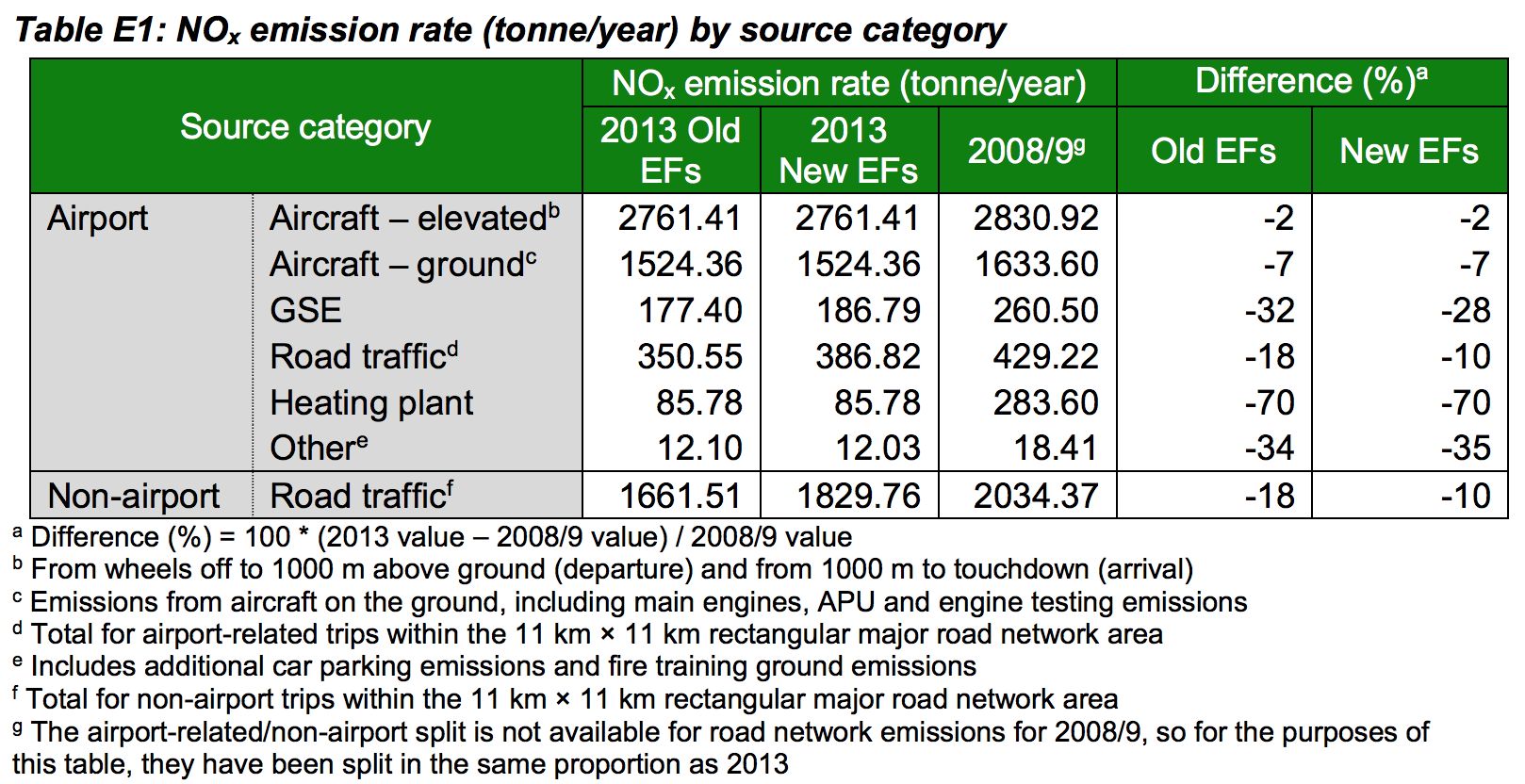Data shows the NOx produced by Heathrow planes is over double that produced by road vehicles
There is a widely held belief that Heathrow’s NO2 air pollution is largely due to road vehicles, and as long as measures can be taken to reduce these a bit, then a 3rd runway could be allowed. However, research indicates that the aircraft are producing even more NOx than the road vehicles, and there is far less that can be done to cut these emissions. Indeed, if there were to be almost 50% more Heathrow flights, the amount of NOx generated by the aircraft alone would mean a massive increase locally. That is not taking into account all the extra road traffic that would inevitably be generated by a larger Heathrow, including businesses etc that locate near the airport and all their traffic. The 2013 figures from a study for Heathrow, by Ricardo-AEA Ltd show the amount of NOx emitted from planes up to 1000 metres altitude was 2761 tonnes NOx/ year, and 1524 tonnes from aircraft on the ground (ie a total of 4285 tonnes/ year). Also 274 tonnes/year from other airport sources. Then 350 tonnes/year from Heathrow associated trips on main roads in a 11km x 11km area, and 1661 tonnes/ year from non-Heathrow associated traffic in that 11x11km area. (ie. a total of 2011 for all road traffic). So the amount from planes is way over twice the amount from road vehicles. And that ignores the NOx from planes in the wider area, over 1000 metres altitude.
.
Tweet
Heathrow Airport 2013 Air Quality Assessment
Report for Heathrow Airport
By Ricardo-AEA/R/3438 Issue Number 1
Date 16/01/2015
.
There is a lot of detail in the paper, but below are a couple of quotes.
This report presents an assessment of air quality in the neighbourhood of Heathrow Airport in the year 2013.
It considers the impacts of the operation of the airport (including road traffic to and from the airport), as well as non-airport sources of air pollution, in order to estimate both the overall picture of air quality and the airport’s contribution to it.
Broadly speaking, near Heathrow there are three main categories of air pollution:
Road traffic, some of which will be travelling to or from the airport;
Heathrow Airport itself, especially aircraft engines and the ground support vehicles and equipment that service the aircraft;
Other sources both local and more distant, such as domestic and commercial heating, industrial processes, and other vehicles and equipment powered by combustion engines. The study was designed with these purposes in mind. The work falls into three main parts:
First, an emissions inventory is calculated to estimate how much of each pollutant is emitted from the different sources.
Second, dispersion modelling calculates how the emissions are carried through the air, due to meteorological conditions such as wind speed and direction, and the resulting concentrations of pollution in the air.
These modelled concentrations are then compared with monitoring data as a check on the accuracy of the model.
The final total concentrations are also compared with the air quality limit values to see if there is a risk of them being exceeded.
……
They conclude on NOx:
Aircraft make a dominant contribution to the airport NOx emissions. It should be borne in mind that this is for aircraft emissions in the LTO cycle (so cruise emissions are excluded because they have no impact on local air quality), and road network emissions are presented only on major roads within the 11 km × 11 km area around the airport. Choosing a larger road network area would change the balance of calculated emissions.

On PM10 particles :
Focusing on airport-related sources, emissions from airport-related traffic on the road network are roughly equal to aircraft emissions, in contrast to NOx where aircraft emissions were dominant. However it should be repeated that choosing a different road network area would change the balance of calculated emissions.

